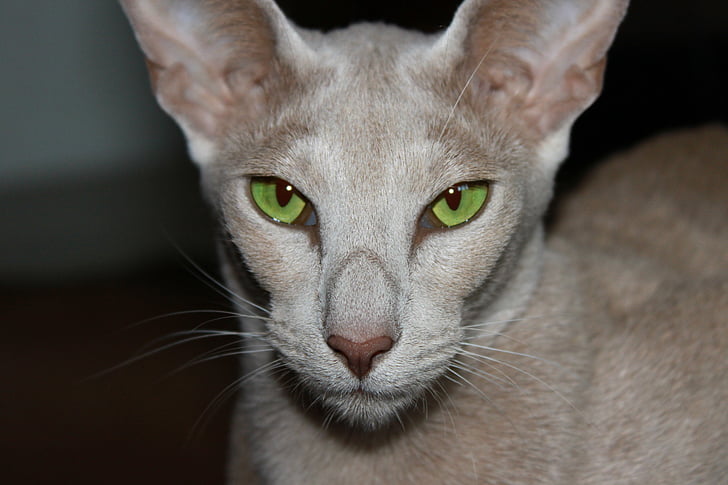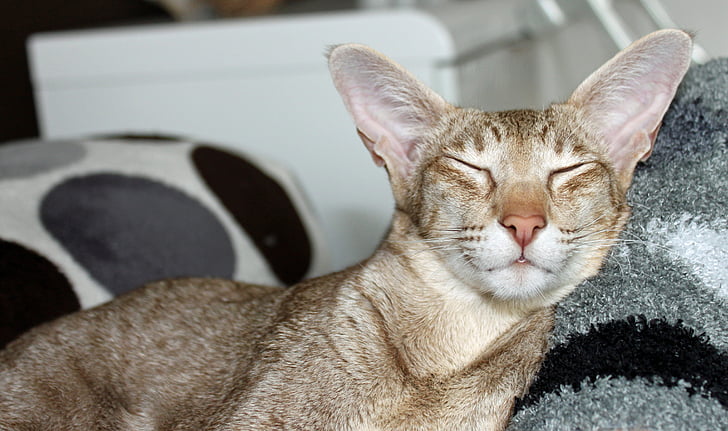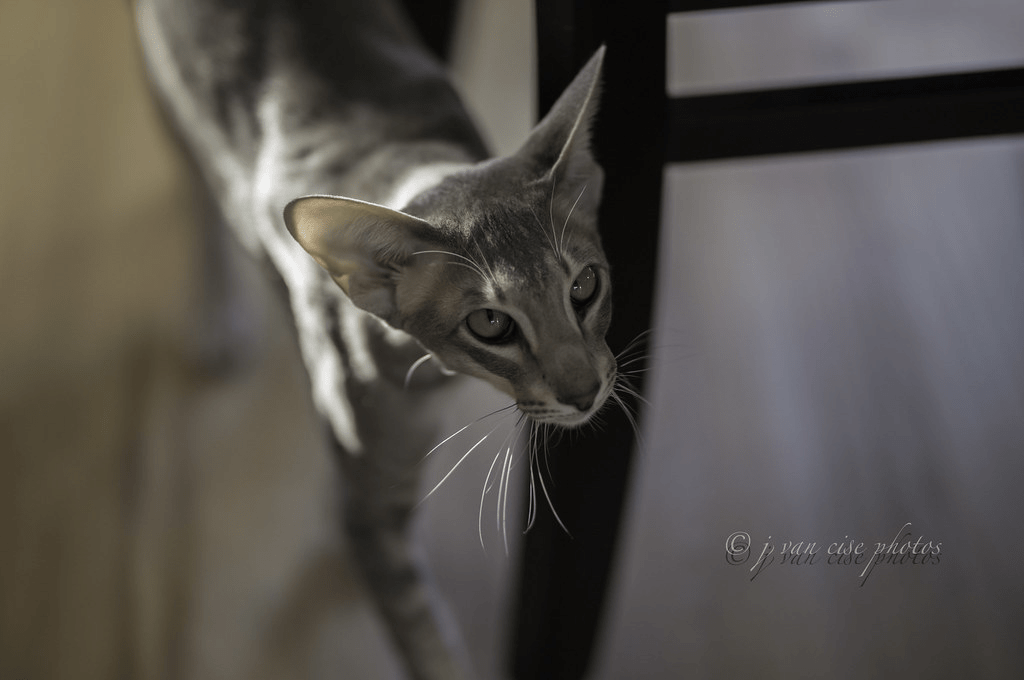The Oriental Shorthair stands out in the feline world for its striking appearance and dynamic personality. This breed, characterized by its sleek coat, slender physique, and wide array of colors and patterns, captures the hearts of cat enthusiasts worldwide. Beyond their physical allure, Oriental Shorthairs are known for their intelligence, sociability, and strong bond with their human companions. They thrive on interaction and are often described as ‘dog-like’ in their loyalty and affection towards their owners. This introduction aims to shed light on the unique traits that make the Oriental Shorthair a beloved pet and a fascinating subject for those interested in the diversity of cat breeds.
Key Takeaways
- Oriental Shorthairs are affectionate and lively cats, making them great companions for families and individuals alike.
- Regular vet check-ups and a healthy diet are crucial to keep these cats in top shape, as they can be prone to specific health issues.
- These cats thrive on interaction and do not like being left alone for long periods, so consider their need for companionship when adopting.
- When looking for an Oriental Shorthair, it’s important to research breeders thoroughly or consider adoption from reputable shelters.
- Understanding the unique personality traits and care needs of the Oriental Shorthair will ensure a happy and healthy life for your pet.
- Engaging with a community of Oriental Shorthair owners can provide valuable insights and support for both new and experienced cat owners.
Breed Overview
History
The Oriental Shorthair traces its origins back to Thailand, known for its rich history of cat breeding. These cats are depicted in ancient manuscripts, dating back centuries. Their journey to Western recognition began in the 1950s and 1960s when breeders sought to expand the Siamese breed’s color palette. By crossbreeding Siamese cats with other breeds, they achieved the distinct look of the Oriental Shorthair. This process not only diversified their appearance but also contributed to the breed’s unique characteristics. The Cat Fanciers’ Association (CFA) officially recognized them in 1977, marking a significant milestone in their history.
Physical Characteristics
Oriental Shorthairs boast a slender, elegant body that showcases their fine bone structure. They move with grace and agility, reflecting their athletic nature. Their large, almond-shaped eyes are one of their most captivating features, coming in a variety of colors that contrast beautifully with their sleek coats. Speaking of coats, these cats offer an impressive range of colors and patterns—over 300 combinations have been noted! This diversity makes each Oriental Shorthair truly unique, from solid colors to intricate tabby patterns and everything in between.
Personality and Temperament
Known for their social and affectionate nature, Oriental Shorthairs form strong bonds with their owners. They thrive on attention and interaction, making them ideal companions for those willing to engage with them frequently. Their vocal tendencies add to their charm; they’re known for “talking” to their owners in long, drawn-out conversations. Beyond their sociable demeanor lies a sharp intellect and boundless curiosity. These traits fuel their playful behavior, often leading them into mischievous adventures around the house.

Health And Care
Common Health Issues
Oriental Shorthairs, while generally healthy, have genetic predispositions to certain conditions. Heart and kidney diseases are among the top concerns for this breed. Owners should be vigilant for signs of these issues early on.
Dental problems can also plague these cats. Regular dental check-ups are crucial to prevent severe complications. Genetic testing plays a significant role in identifying inherited conditions. It helps in taking proactive measures to ensure their well-being.
Dietary Needs
The high energy levels of Oriental Shorthairs demand a balanced diet. This diet supports their active lifestyle. Consulting a vet for a personalized dietary plan is wise.
Owners must be cautious about overfeeding. These cats can gain weight easily, leading to health issues.
Exercise Requirements
Daily physical activity is non-negotiable for keeping Oriental Shorthairs mentally stimulated and physically fit. Interactive toys and games cater to their intelligence and agility, making exercise enjoyable.
For those who can manage it, safe outdoor access or supervised walks are beneficial. They provide mental stimulation and physical exercise, keeping the cat agile and lively.
Grooming
Their short coat requires minimal grooming, making them relatively low maintenance in this aspect. However, regular ear cleaning and nail trimming are essential to maintain their overall health.
Occasional baths help keep their coat shiny and healthy without much fuss.
Living with a Oriental Shorthair
Training and Socialization
Oriental Shorthairs impress with their high intelligence. This trait makes them highly trainable. Owners should start with litter training as soon as they bring their kitten home. Basic commands come next. These cats catch on quickly.
Early socialization is crucial for these sociable felines. They need to get used to people and other pets early on. This helps prevent shyness or aggression later. Activities that challenge both their mind and body are beneficial. They keep the cat engaged and happy.
Environment
Creating a stimulating environment is key for Oriental Shorthairs. They love to climb and explore. Thus, having climbing trees and perches in the home is a must. These give them a sense of adventure and satisfy their curiosity.
However, one should not leave them alone for long periods. Their social nature craves companionship. Without it, they can become bored or anxious. Regular interaction and playtime are essential to keep them content.
Activities They Enjoy
Interactive play sessions rank high on their list of favorites. Games like fetch captivate them, as do puzzle toys that challenge their intellect. These activities not only entertain but also deepen the bond between pet and owner.
For those with extra energy, agility training or cat sports are perfect outlets. These activities help burn off energy in a constructive way. For outdoor exploration, ensure the spaces are safe or consider a cat-friendly patio setup.

Breeder Advice and Adoption
Choosing a Breeder
When you decide to welcome an Oriental Shorthair into your home, finding a reputable breeder is crucial. These breeders not only prioritize the health of their kittens but also their well-being. They conduct thorough health screenings to ensure each kitten is free from genetic conditions common in Oriental Shorthairs.
Visiting the breeding facility gives you a firsthand look at where your potential pet grows up. It’s important to observe the cleanliness of the environment and how the kittens interact with each other and humans. A positive, engaging environment often leads to healthier, more sociable cats.
Don’t hesitate to ask for pedigree information and health guarantees. This documentation provides insight into your kitten’s lineage and health background, offering peace of mind about your future pet’s well-being.
Adoption
Adoption offers a loving home to cats in need, including Oriental Shorthairs that may find themselves in shelters or rescue organizations. Before deciding on adoption, consider preparing a list of questions regarding the cat’s health history and temperament. Knowing as much as possible about your potential pet helps ensure they’re a good fit for your lifestyle and household.
Spending time with the cat before finalizing the adoption is beneficial. This interaction can reveal much about their personality and how they might adapt to their new home. It’s essential for both you and the cat to feel comfortable and connected with each other.
Misc.
Popular Names
Choosing the right name for an Oriental Shorthair cat can be a delightful process, reflecting their unique characteristics. Names like Luna, Orion, and Cleo draw inspiration from their elegant and sleek appearance. These names evoke a sense of beauty and grace that matches the cat’s physical traits perfectly.
For those captivated by their playful and curious nature, names such as Mischief or Gizmo are fitting. They capture the spirited and lively personality of these felines. Honoring their origins with traditional Thai names adds a touch of authenticity. Names like Suri or Niran reflect not only their heritage but also their exotic allure.
Fun Facts
Oriental Shorthairs are known for their “chatty” demeanor, capable of a wide range of vocalizations. This ability makes them seem almost conversational with their owners. Their distinctive voices add to their charm and personality, making them unforgettable companions.
They’ve also made it into the Guinness Book of World Records for having the longest tail among cats. This record highlights not just their physical uniqueness but also cements their place in feline history. Furthermore, due to their striking looks, they often serve as “spokes-cats” in various advertising campaigns. Their sleek build and expressive eyes make them natural stars in front of the camera.
Common Myths
Contrary to popular belief, the slim build of an Oriental Shorthair does not mean they are fragile or unhealthy. In fact, they are quite robust and agile creatures. Their slender physique is a breed characteristic rather than a health concern.
Despite being vocal, they are not necessarily loud or disruptive. Their sounds are more about communication than causing disturbance. Also, they defy the high-maintenance stereotype thanks to minimal grooming needs. Their short coats require less care than those of many other breeds, debunking another common misconception about these elegant cats.
Most Similar Breed
The Siamese cat shares many similarities with the Oriental Shorthair, including body shape and personality traits. Both breeds exhibit a slender physique, pointed ears, and an affectionate nature towards humans.
However, they differ significantly in coat color and pattern variety; Orientals boast a wider range of colors and patterns than Siamese cats do. Despite these differences, both breeds share a close genetic relationship and history, underlining their interconnectedness within the feline world.
Top Cat Grooming Tools (Click Here)

Final Remarks
The Oriental Shorthair stands out as a breed with unique characteristics, requiring specific health and care considerations. This cat’s slender physique, engaging personality, and social nature make it a beloved companion in many households. Owners should prioritize regular veterinary check-ups, a balanced diet, and ample social interaction to ensure their pet’s well-being. The process of selecting a reputable breeder or considering adoption offers potential owners the chance to welcome a healthy and well-socialized Oriental Shorthair into their homes.
For those intrigued by the Oriental Shorthair’s charm, further exploration into this breed’s needs and lifestyle is encouraged. Engaging with breeders, veterinarians, and current owners can provide invaluable insights into living with these remarkable cats. By making informed decisions about care and companionship, enthusiasts can ensure a fulfilling life for their Oriental Shorthairs and enrich their own lives in the process.
Frequently Asked Questions
What is the lifespan of an Oriental Shorthair?
Oriental Shorthairs typically live between 12 to 15 years. Proper care and regular veterinary check-ups can contribute to a longer, healthier life.
How much grooming does an Oriental Shorthair require?
Oriental Shorthairs have short, fine coats that require minimal grooming. A weekly brushing is sufficient to remove loose hair and maintain coat health.
Are Oriental Shorthairs good with children?
Yes, Oriental Shorthairs are known for their social and playful nature, making them excellent companions for children. They enjoy being part of family activities.
What health issues should I be aware of in Oriental Shorthairs?
Oriental Shorthairs can be prone to dental issues, heart problems such as hypertrophic cardiomyopathy, and respiratory issues. Regular veterinary visits are essential for early detection and management.
Can Oriental Shorthairs adapt to apartment living?
Absolutely. Oriental Shorthairs can thrive in apartment settings due to their adaptable nature. They do require sufficient space for exercise and mental stimulation.
What should I consider when adopting an Oriental Shorthair from a breeder?
When adopting from a breeder, ensure they are reputable by checking for health clearances of the kitten’s parents and asking about socialization practices. Also, visit the breeding facility to observe conditions.
Is the Oriental Shorthair hypoallergenic?
No cat breed is truly hypoallergenic, including the Oriental Shorthair. However, due to their short coat, they may produce fewer allergens compared to some other breeds.






0 Comments